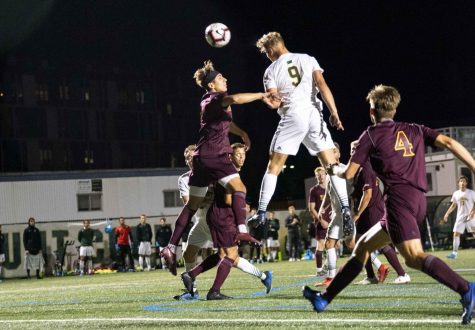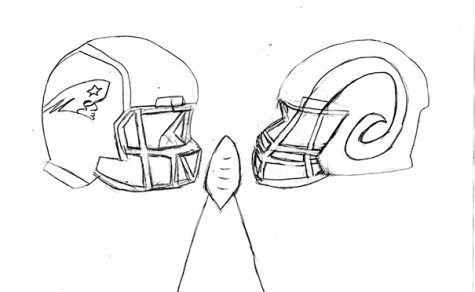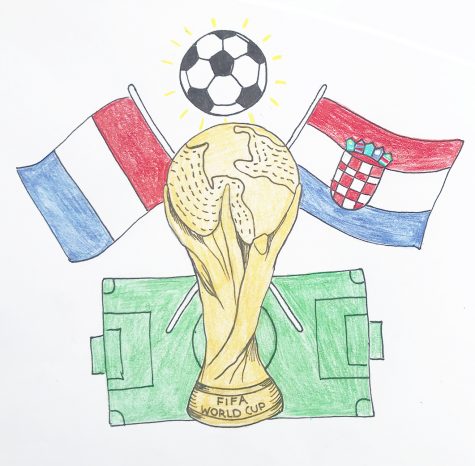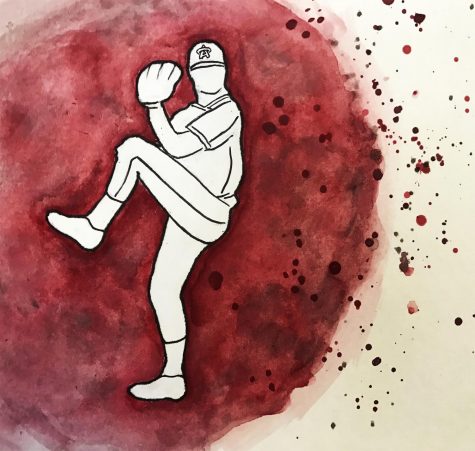Korean unity headlines the Pyeongchang Olympics
February 23, 2018
The Baron Pierre de Coubertin designed the Olympic rings to represent the “united by Olympism,” according to a Feb. 11, 2014 The Week article.
Perhaps the biggest show of unity in Olympic history is happening right now, with two bordering nations still technically at war coming together in cooperation and union.
At the Parade of Nations, part of the Olympic opening ceremonies, the host country enters last.
But when it came time for the hosts to enter Pyeongchang Olympic Stadium in Pyeongchang, South Korea, it wasn’t just the hosts that entered.
Two flag bearers, a hockey player and a bobsledder, entered the stadium, holding a white flag.
The flag the bearers held was a simple white flag with a silhouette of the Korean peninsula on it. It was not the South Korean flag, which while still white, has a red-and-blue circle in the middle officially known as a taeguk.
It was not an act of antagonism from the either side of the Korean border, but rather a display of unity between the two nations: one Korean people, torn apart by war, coming together on the biggest stage in sport.
Though most of the events have seen North and South Korea compete separately, they are competing together on a unified women’s hockey team. The team is made up of 23 players from the south and 12 from the north, coached by the head coaches of the two nations – Sarah Murray from the South and Pak Chol-ho from the North.
This isn’t the first time two nations, largely divided by political conflict, have competed in the Olympics as one nation. A divided Germany sent a united team to three Olympiads in the late 1950s and early 1960s, according to the International Olympic Committee website.
Unlike that German team, however, the North and South are still technically at war, as no peace treaty was signed following the Korean War in the 1950s.
The peninsula’s split came following World War II and the end of Japanese occupation.
Japan had annexed the Korean Empire in 1910, and held the peninsula until their surrender after World War II.
The People’s Republic of Korea, a provisional government set up by the Korean people following Japan’s surrender, was quickly dissolved when the United States established a military government in the southern part of the country, leaving the north to the Soviet Union.
The unified women’s hockey team went up against Japan in their final round-robin game at the Kwandong Hockey Centre following two 8-0 defeats to Switzerland and Sweden.
In the second period, with Japan up 2-0, Randi Heesoo Griffin, a U.S. native of Korean ancestry, slipped a puck through the legs of Japanese goaltender Akane Konishi, which cut the lead in half.
An entire peninsula, beyond just the 4,110 in the arena waving the unification flag from the opening ceremony, erupted in joy.
Korea lost the game 4-1 and fell to Switzerland in the classification game, sending them to the seventh-place game against Sweden. The women’s hockey tournament only has eight teams, so the loser will finish in last place.
Despite the result on the ice, the Koreans are the true winners of the Olympics.
U.S. Olympic Committee member Angela Ruggiero, a former women’s hockey Olympian, proposed that the unified Olympic team should be nominated for the Nobel Peace Prize, according to a Feb. 11 Reuters article.
In a time when it feels like every piece of news is bad, perhaps Ruggiero has a point: the results don’t matter.
This joint venture is bigger than sport and could be a huge step towards peace on the peninsula.












